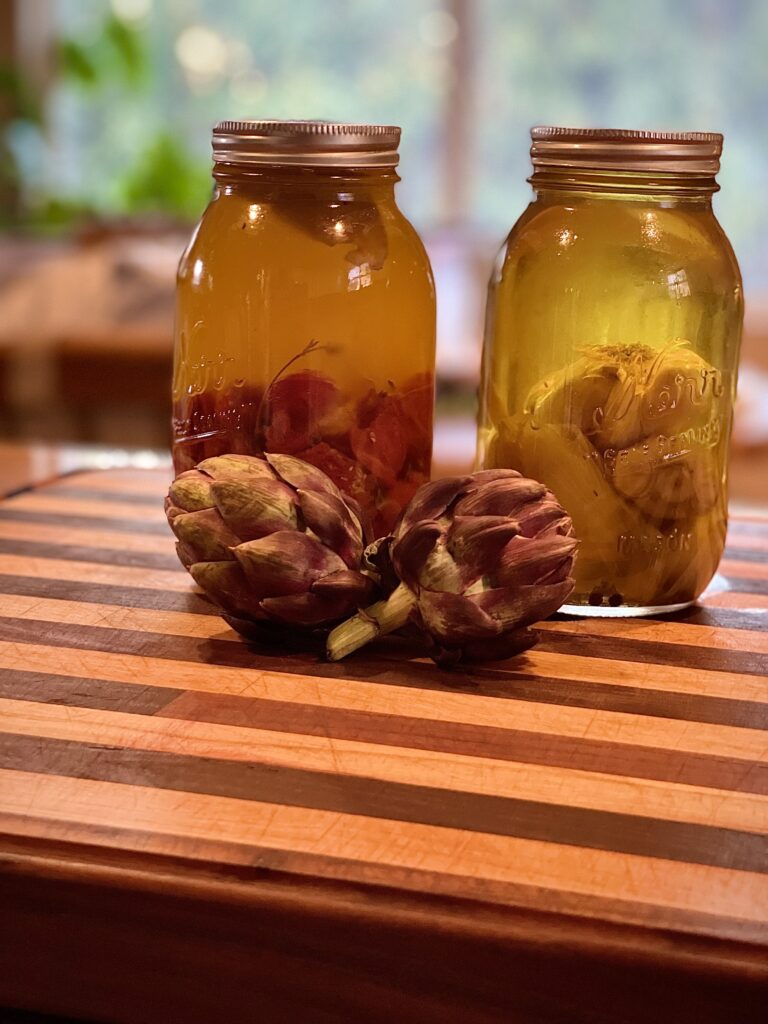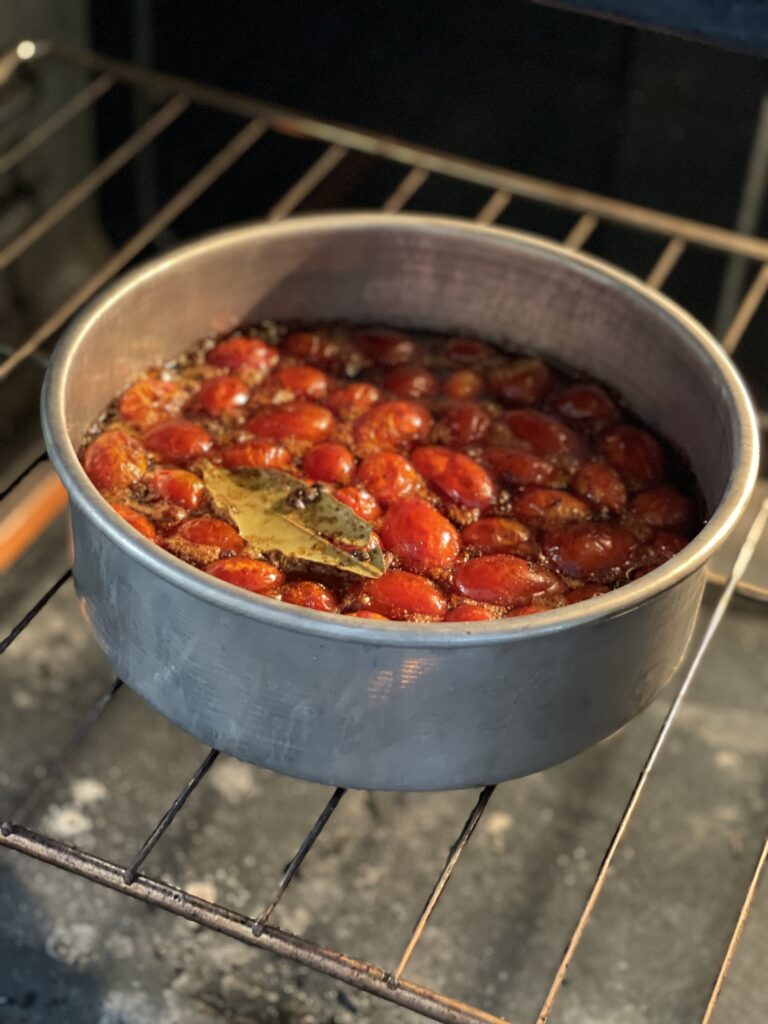Tomato Confit

I want to take some time and focus on technique instead of sharing a recipe for a complete dish with this post. As inflation continues to be a burden on our collective pocketbooks, I see more and more posts on social media asking about “cheap eats” or “cost-effective recipes” and I’ve seen a ton of great advice out there but… I have noticed technique takes a back seat role in a lot of these recipes and ideas. I believe that we need fundamental shift in the way we look at cost-effective shopping and eating and that shift starts with the basics. Preservation of produce is a fundamental skill to learn. When the first farms popped up during the Neolithic Revolution something became apparent immediately – produce spoils fast, especially without refrigeration. We had to learn how to stretch our crops and make them last.
Confit literally means “to preserve” in French. The modern method of confit is simple: salting and cooking something in fat at a low heat. It is a famous preparation for meat, but it works great for vegetables and tomatoes lend themselves particularly well for it. The tomatoes at the market the last few weeks are incredible. The ones I used for this preparation were from Duncan Family Farms and Crooked Sky Farm. Now, when you see all the varieties of tomatoes and wish that you could find a way to use them all before they go bad – look no further and make a few jars of tomato confit. It will keep for months in the fridge and works well with anything that normal tomato could be used for. One of my personal favorite things to put it in a humble grilled cheese sandwich.
I hesitate to call this a recipe because the volumetric measurements do not really matter. In fact, I encourage you to try this without measuring anything. Learn how to season and cook by intuition and you will become a more effective cook. I will write out a basic template to follow but don’t be afraid to mix it up. Home cooks can be tentative with salt, don’t make an ocean out of it but don’t be afraid to put a few good three finger pinches in this. The most important thing to this technique is to ensure that you use enough oil to cover your tomatoes and that you cook at a low heat so as to not fry the tomatoes!
Ingredients:
- 3 lbs. tomatoes
- 2 bay leaves
- 6 sprigs of thyme
- Half a head of garlic
- 1 tablespoon of kosher salt
- 10 black peppercorns
- Vegetable Oil (or any neutral oil)

Method:
Preheat the oven to 200F
If you’re using larger tomatoes I recommend taking the skins off them. The simplest method to do this is to get a pot of water to a rolling boil and drop the tomatoes in. I usually do a couple at a time. Boil them for 30-45 seconds or until you can see the skin crack. Then use a slotted spoon to take them out of the boiling water and into a bowl of ice water. Once the tomato has cooled you should be able to simply use your hands and slip them out of their skin by gently rubbing them. Hold on to the skins though and make a passata with them – *crash course on passata* take the skins of the tomatoes and put them in a blender with a good glug of extra virgin olive oil. Blend it for a good 45 second to a minute. Strain it through a fine mesh strainer and voila – a simple tomato skin passata that reduces waste. This is great to dunk bread into, or to add to a tomato sauce to intensify its flavor.
Once you have prepared your large tomatoes or omitted that step with smaller ones, put the tomatoes in a baking dish. Pour in enough oil to cover the tomatoes completely. You can use extra virgin olive oil if you wish, but a neutral oil is much more cost-effective. Put the bay leaves, thyme, garlic, salt and black peppercorns into the dish and put them into the oven. You can cut parchment paper to fit you dish and put it over the top to ensure total submersion but I don’t find that it is necessary.
Cook them gently for 5-6 hours. Once they’re done transfer them to a jar or storage vessel and let cool completely before transferring to the fridge. I store mine in the oil but you can strain the tomatoes our and store them separately. Keep in mind you can do this with any vegetable. Garlic confit is fantastic and yields cloves that spread like butter onto bread. Potatoes, radish, turnip, eggplant (a favorite) etc. This method is not traditional but it is a really easy way to stretch your produce and diversity your pantry ingredients.


Posted in Agriculture, All Recipes, Community, Education, Local, Recipe, Recipe Box, Sustainability, Taste of the Market, Vegan, What's In Season